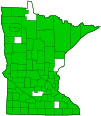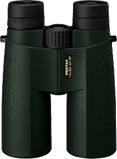Stink bugs
(Euschistus spp.)
Overview • Description • Distribution • Taxonomy
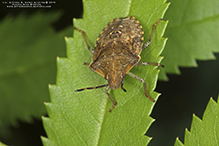
Overview
Euschistus is a genus of stink bugs. They occur throughout North and South America. There are more than 70 species worldwide, 20 species in North America north of Mexico, and 4 species in Minnesota. They are found in a variety of habitats, including woodlands, orchards, and agricultural fields. Both adults and larvae are plant feeders.
The female lays clusters of eggs in tight rows on the underside of leaves. Adults overwinter on the ground in leaf and plant litter.
Description
Euschistus adults are 5⁄16″ to ⅝″ (8 to 15 mm) long. The upperside is drab, with yellow, brown, black, and sometimes red colors. The head is about as long as wide. There are three lobes on the front of the head. The pair of lateral lobes (juga) are about the same length as the central lobe (tylus), often slightly longer, occasionally slightly shorter.
The outer (costal) margins of the forewings (hemelytra) are not toothed. There is a dark spot, more a smudge, in the middle of the triangular plate behind the pronotum (scutellum), and a similar spot in the middle of the basal portion (corium) of each hemelytron. The spots are diffuse and may be barely visible.
The third leg segment (femur) of each leg is hairy but has no spines or tubercles. The fourth segment (tibia) of each leg is grooved above.
Distribution |
||
|
Sources Biodiversity occurrence data published by: Minnesota Biodiversity Atlas (accessed through the Minnesota Biodiversity Atlas Portal, bellatlas.umn.edu, 10/27/2025). |
|
| 10/27/2024 | ||
Taxonomy
Order
Hemiptera (True bugs, Hoppers, Aphids, and Allies)
Suborder
Heteroptera (True Bugs)
Infraorder
Pentatomomorpha
Superfamily
Pentatomoidea (stink bugs, shield bugs, and allies)
Family
Subfamily
Pentatominae
Tribe
Carpocorini
Subordinate Taxa
brown stink bug (Euschistus servus) ![]()
consperse stink bug (Euschistus conspersus) ![]()
dusky stink bug (Euschistus tristigmus luridus) ![]()
![]()
one-spotted stink bug (Euschistus variolarius) ![]()
![]()
pale-lined stink bug (Euschistus obscurus) ![]()
stink bug (Euschistus acuminatus) ![]()
stink bug (Euschistus bifibulus) ![]()
stink bug (Euschistus biformis) ![]()
stink bug (Euschistus crassus) ![]()
stink bug (Euschistus crenator) ![]()
stink bug (Euschistus egglestoni) ![]()
stink bug (Euschistus ictericus) ![]()
![]()
stink bug (Euschistus inflatus) ![]()
stink bug (Euschistus latimarginatus) ![]()
stink bug (Euschistus politus) ![]()
stink bug (Euschistus quadrator) ![]()
stink bug (Euschistus rugifer) ![]()
stink bug (Euschistus strenuus) ![]()
Synonyms
Common Names
This genus has no common name. The common name of the family Pentatomidae is stink bugs, and it is applied here for convenience.
Glossary
Corium
The thickened basal portion of the front wing that lies between the clavus and the membrane of insects in the family Hemiptera. Plural: coria.
Femur
On insects and arachnids, the third, largest, most robust segment of the leg, coming immediately before the tibia. On humans, the thigh bone.
Hemelytron
The forewing of true bugs (order Hemiptera), thickened at the base and membranous at the tip. Plural: hemelytra.
Scutellum
The exoskeletal plate covering the rearward (posterior) part of the middle segment of the thorax in some insects. In Coleoptera, Hemiptera, and Homoptera, the dorsal, often triangular plate behind the pronotum and between the bases of the front wings. In Diptera, the exoskeletal plate between the abdomen and the thorax.
Tibia
The fourth segment of an insect leg, after the femur and before the tarsus (foot). The fifth segment of a spider leg or palp. Plural: tibiae.
Visitor Photos
Share your photo of this insect.
This button not working for you?
Simply email us at info@MinnesotaSeasons.com.
Attach one or more photos and, if you like, a caption.
Alfredo Colon |
||
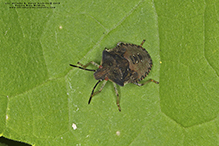 |
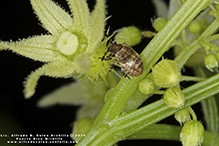 |
|
 |
||
|
||
MinnesotaSeasons.com Photos
|

Slideshows
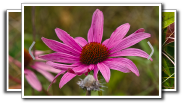
Visitor Videos
Share your video of this insect.
This button not working for you?
Simply email us at info@MinnesotaSeasons.com.
Attach a video, a YouTube link, or a cloud storage link.
Other Videos
Stink Bug Nymph (Pentatomidae: Euschistus) Feeding on Pupa
Carl Barrentine
Brown Stink Bug (Pentatomidae: Euschistus?) on Grass
Carl Barrentine
Stink Bug (Pentatomidae: Euschistus?) on Plant Stem
Carl Barrentine

